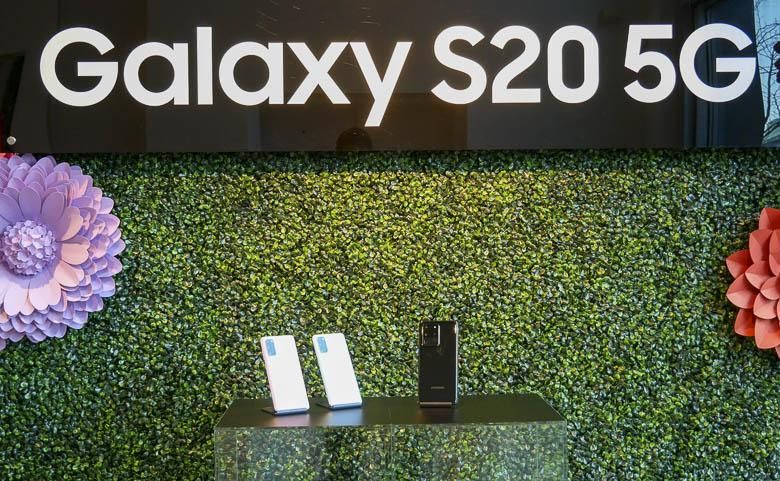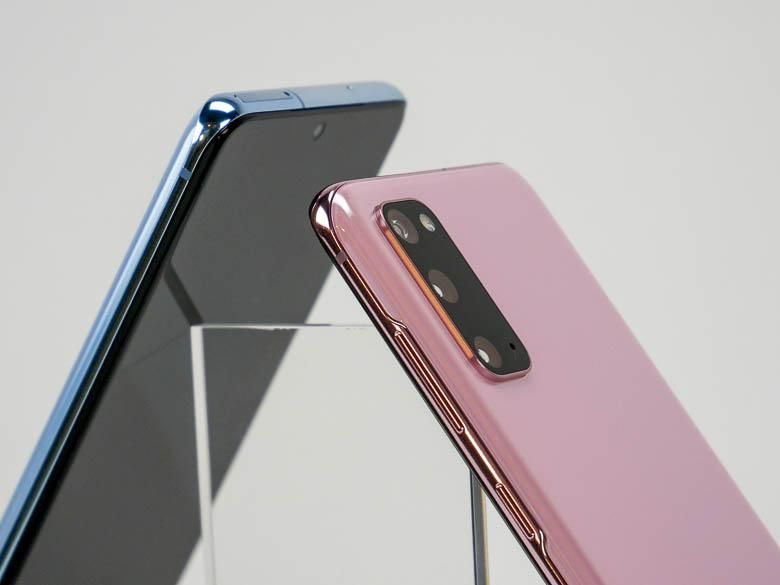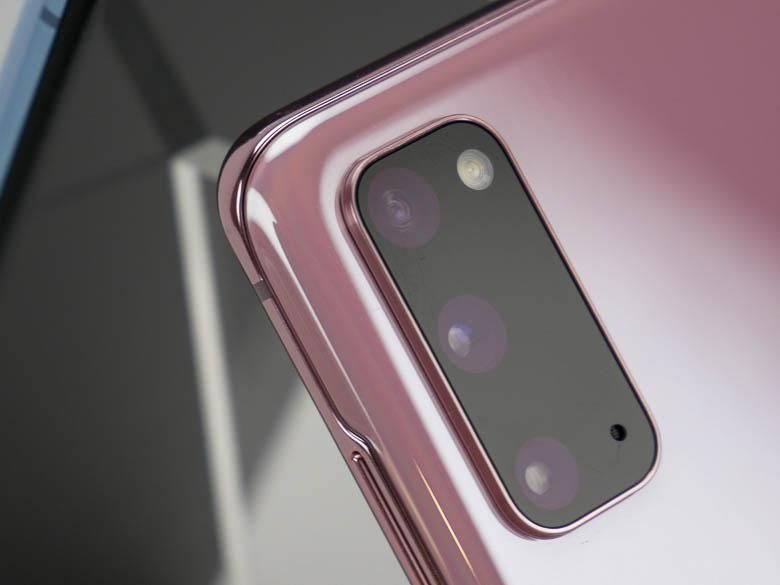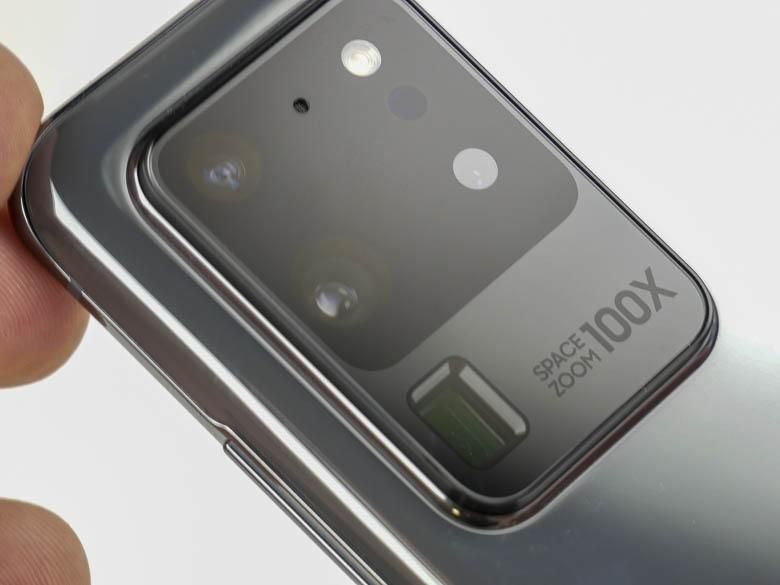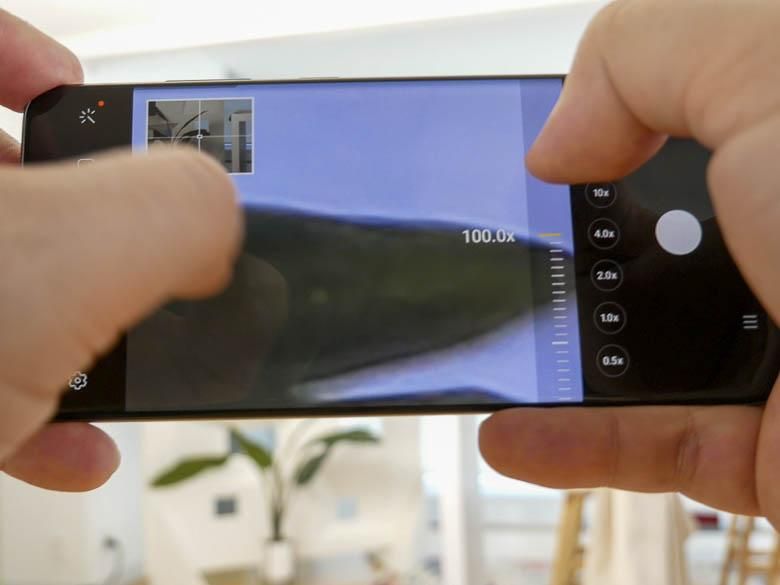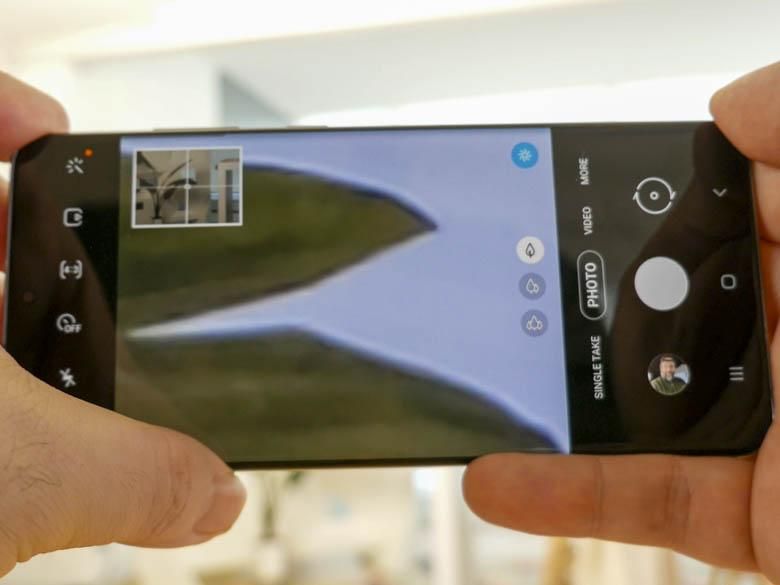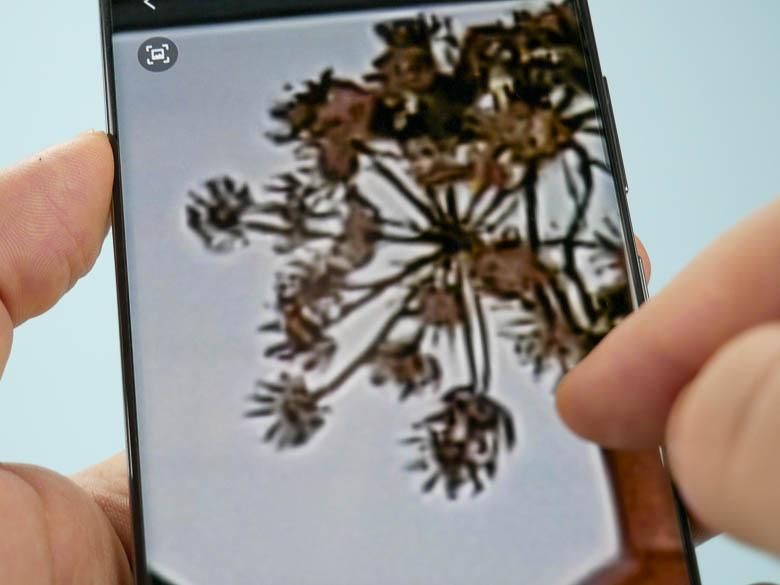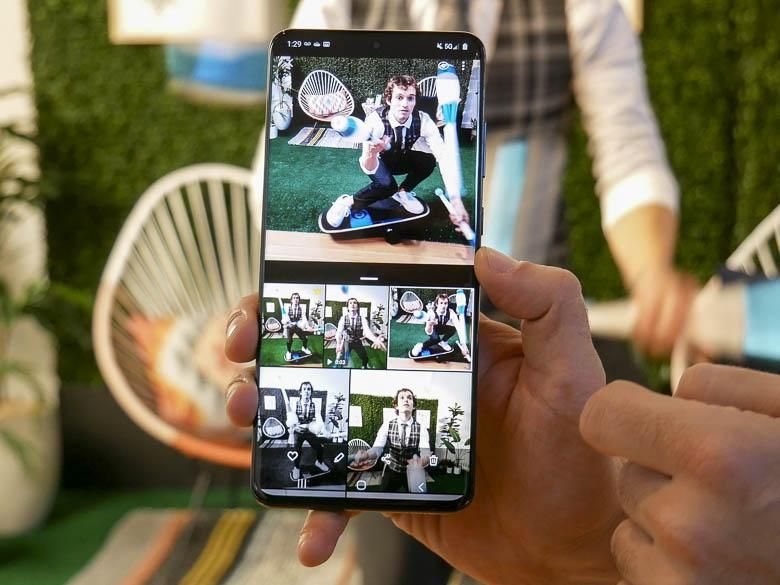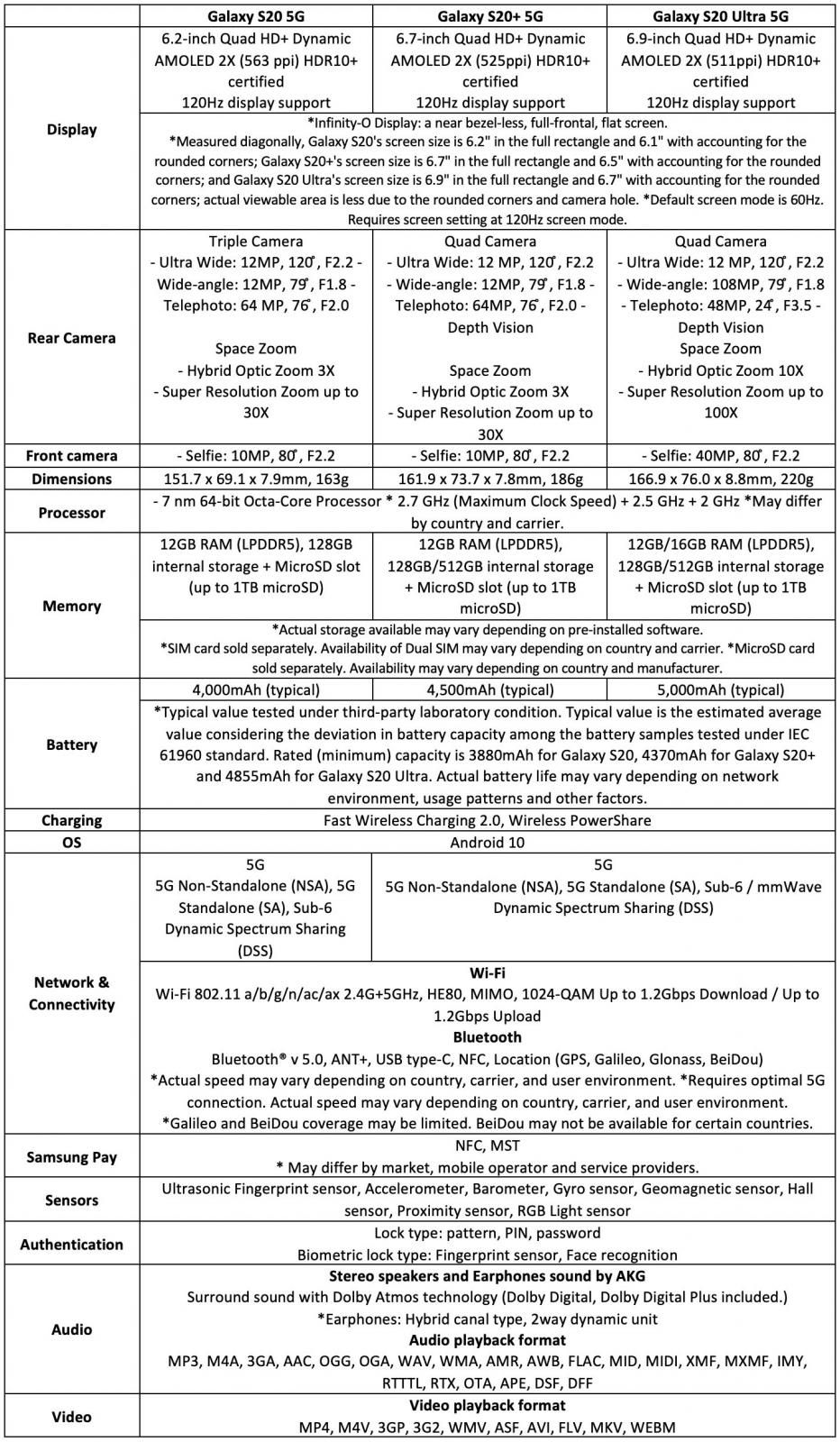We’ve got three new Samsung Galaxy S20 5G phones being announced today. The first thing you’ll notice is that we’ve jumped from the Galaxy S10 all the way ten forward to Galaxy S20 instead of Galaxy S11. The Galaxy S20 5G comes in three sizes. The S20 regular is the smallest with a 6.2″ screen. Then comes the S20+ with a 6.7″ screen. The new S20 Ultra has a 6.9″ screen. All of these new phones include new camera technology as well as Non-Standalone Sub-6 5G, while the S20+ and S20 Ultra also include mmWave 5G.
There are some nice new color options for the Galaxy S20 phones too. The S20 regular is available in Cosmic Gray, Cloud Blue, or Cloud Pink. The S20+ is available in Cosmic Gray, Cosmic Blue, or Cosmic Black. The S20 Ultra is available in Cosmic Gray or Cosmic Black.
The Galaxy S20 has three cameras on the back: a 12Mp ultra-wide angle 120 degree angle of view, another 12Mp with an average 79 degree angle of view, and a 64Mp telephoto camera with a 76 degree angle of view.
The Galaxy S20+ has those same 3 cameras on the back plus a depth sensor for those fake blurry background filters that always look bad. (Here’s how to fix poor background blur filters on your smartphone cameras with Photoshop.) Both also have what Samsung calls “Super Resolution Zoom up to 30X”, but that really just means digital zoom. However, with the 64Mp telephoto camera, you can do a lot of digital zoom and still get something decent.
The Galaxy S20 Ultra steps up the camera sensors significantly. On this one, you’ll find the same ultra-wide angle 120 degree 12 megapixel camera, but then for the 1x normal wide-angle 79 degree angle of view camera, you’ve got a new 108Mp sensor. Then the telephoto lens has a much narrower 24 degree angle of view matched with a 48MP sensor.
Along with the 48MP (5x from UltraWide) telephoto lens, Samsung also enables 100x digital zoom on the Galaxy S20 Ultra. They call it “Space Zoom”. As you can see in the above example, it’s clearly just digital zoom added to the 48Mp sensor and quality is certainly going to suffer with that much digital zoom.
You may see Samsung or other tech sites saying that these phones have “Optical Zoom”, but that’s not true. They use multiple cameras with different lens focal lengths and completely different sensors that combine with digital zoom. For a further explanation about how this multi-camera technology works, see “Stop calling it optical zoom when the optics don’t zoom.”
If you stick to using the “one leaf”, “two leaves”, “three leaves” icons in the camera software’s view frame, you’ll be switching between cameras using their full sensor image quality without digital zoom, but remember each sensor still has a different image quality anyway… so again, nothing even close to what optical zoom really is.
Now, we weren’t really able to test the actual RAW output of the cameras, so we can only judge by what we see on the screen. Above is an example of the 108Mp camera zoomed in alot with the photo viewer on the phone. It does NOT look like a 108Mp image at all. Our guess is that this is one of those new sensors that while technically has 108 megapixels, really only outputs one quarter of that since every 4 pixel sensors merge into one in the hardware. So, this is more likely only giving us 27 megapixels of actual data. At least that’s what it feels like in use.
Still, the larger sensor size and averaging over every 4 pixels into one should give a cleaner image as long as the software doesn’t over process things like it seems to do by default in the above. We’re hoping to be able to test the actual RAW camera capabilities soon.
There’s also a new “Artificial Intelligence Powered” feature in the camera. The “Single Take” feature goes into a recording mode for a few seconds and the AI outputs 3 photos and two videos of whatever your subject is while predicting what the most interesting aspects are. It’s an interesting way to capture a bunch of stuff without having to think about what exactly you want to capture. Just let the software decide!
On February 21, 2020, you can pre-order the Galaxy S20, S20+, and S20 Ultra for $999.99, $1199.99, and $1399.99 respectively. The preorder will include $100 or $150 or $200 Samsung credit that you can spend on other Samsung accessories.See below for more specs on the Galaxy S20 5G, Galaxy S20+ 5G, and Galaxy S20 Ultra 5G.

